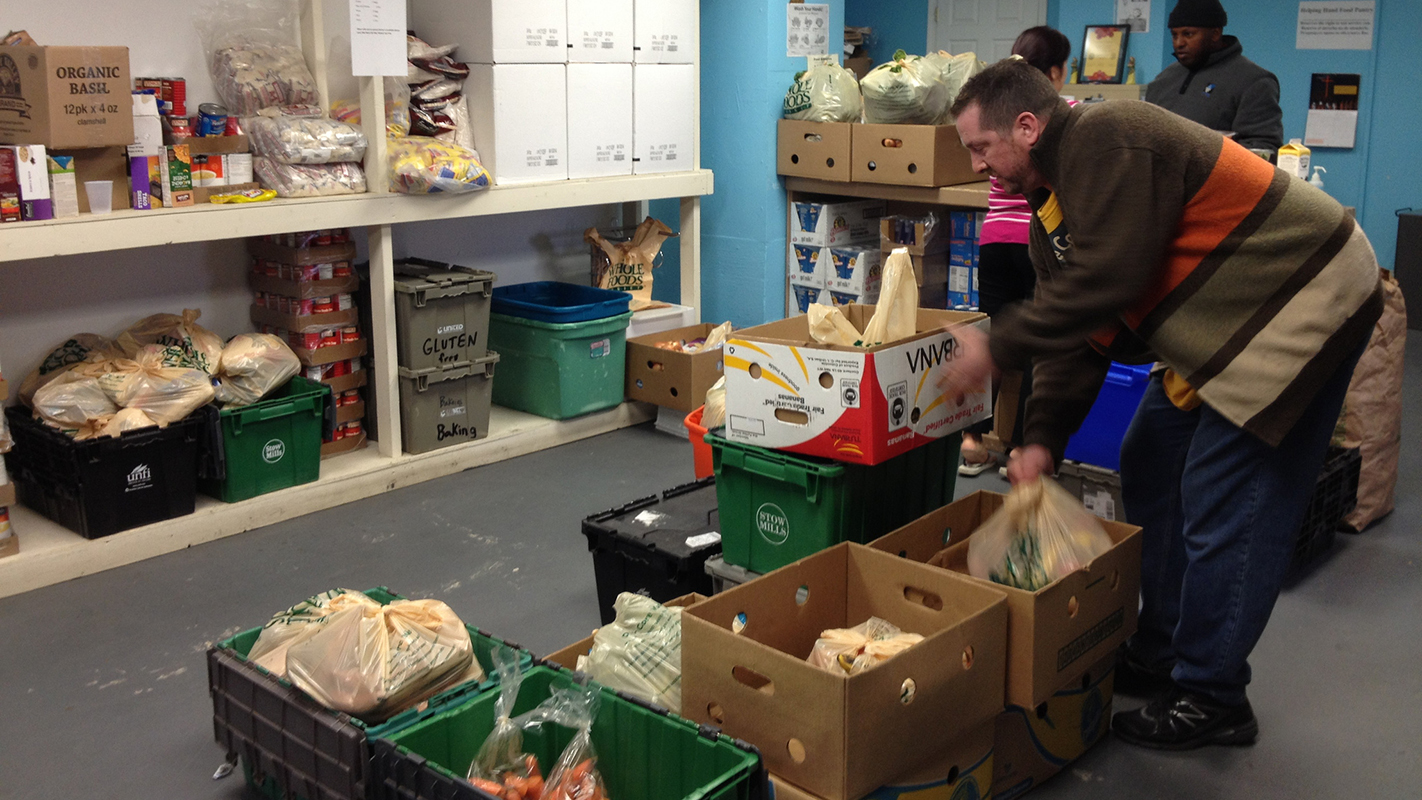Scientists Evaluate Food Safety Practices to Help Support Nonprofit Food Pantries

For Immediate Release
Researchers from North Carolina State University and the University of North Carolina at Chapel Hill have done an in-depth analysis of food safety at nonprofit food pantries that distribute food directly to people in need. While the work has identified shortcomings at many such pantries, the goal was to identify how food safety experts can help these pantries best meet the needs of their clients.
“We knew that food pantries, in North Carolina and many other states, aren’t regulated the same way that restaurants are, and that pantries are crucial distributors of food to those in need, but we did not have a good understanding of how food safety is practiced at food pantries,” says Ben Chapman, an associate professor of youth, family, and consumer sciences at NC State and senior author of a new paper on the work.
“This is a particularly important issue because research tells us that the people most likely to rely on help from food pantries are also those who have less access to health care to address foodborne illness in the event that they do get sick,” says Ashley Chaifetz, lead author of the paper. Chaifetz completed the research while a doctoral student at UNC-Chapel Hill.
For this study, the researchers examined operating procedures and interviewed managers at 105 food pantries in 12 counties across North Carolina. The researchers found that pantry food safety procedures were often informal.
In many ways, the results were promising.
For example, researchers found that virtually all pantries did a good job of limiting opportunities for cross-contamination and providing adequate handwashing facilities – both of which are incredibly important in reducing food safety risk.
However, the pantry managers lacked full information on storage and handling or did not have available resources to properly store all perishable items. Given the focus on health and poverty, many pantries have increased the amount of fresh produce and perishables they distribute, which require proper handling and refrigeration. But more than 75 percent of pantries didn’t provide volunteers with formal training on how to handle that food safely. Thirty-six percent of pantry managers didn’t have a system in place to obtain information on food safety recalls. Additionally, only 32 of the 105 pantries had a protocol in place on how to determine whether sick volunteers should be allowed to handle food.
“This is not about bashing food pantries, which provide an essential service to their communities on a shoestring budget,” Chapman says. “But we needed to identify areas of concern so that we could find ways to help them protect the communities they serve.
“Pantries are doing a lot of things right. Our goal was to develop tools to help them do even better, and to help protect underserved groups. We need to know where the gaps are to better support this incredibly important and passionate nonprofit sector.”
The research has already been used to develop a suite of free, online resources for food pantries, which has been used by nonprofits across North Carolina – both those that participated in the research and those that did not.
The paper, “Evaluating North Carolina Food Pantry Food Safety–Related Operating Procedures,” was published online Nov. 1 in the Journal of Food Protection. The work was supported by Agriculture and Food Research Initiative grant 2012-68003-30155 from the U.S. Department of Agriculture’s National Institute of Food and Agriculture.
-shipman-
Note to Editors: The study abstract follows.
“Evaluating North Carolina Food Pantry Food Safety–Related Operating Procedures”
Authors: Ashley Chaifetz, University of North Carolina at Chapel Hill; Benjamin Chapman, North Carolina State University
Published: Nov. 1, Journal of Food Protection
DOI: 10.4315/0362-028X.JFP-15-084
Abstract: Almost one in seven American households were food insecure in 2012, experiencing difficulty in providing enough food for all their members due to a lack of resources. Food pantries assist a food-insecure population through emergency food provision, but there is a paucity of information on the food safety–related operating procedures that pantries use. Food pantries operate in a variable regulatory landscape; in some jurisdictions, they are treated equivalent to restaurants, while in others, they operate outside of inspection regimes. By using a mixed methods approach to catalog the standard operating procedures related to food in 105 food pantries from 12 North Carolina counties, we evaluated their potential impact on food safety. Data collected through interviews with pantry managers were supplemented with observed food safety practices scored against a modified version of the North Carolina Food Establishment Inspection Report. Pantries partnered with organized food bank networks were compared with those that operated independently. In this exploratory research, additional comparisons were examined for pantries in metropolitan areas versus nonmetropolitan areas and pantries with managers who had received food safety training versus managers who had not. The results provide a snapshot of how North Carolina food pantries operate and document risk mitigation strategies for foodborne illness for the vulnerable populations they serve. Data analysis reveals gaps in food safety knowledge and practice, indicating that pantries would benefit from more effective food safety training, especially focusing on formalizing risk management strategies. In addition, new tools, procedures, or policy interventions might improve information actualization by food pantry personnel.
- Categories:


